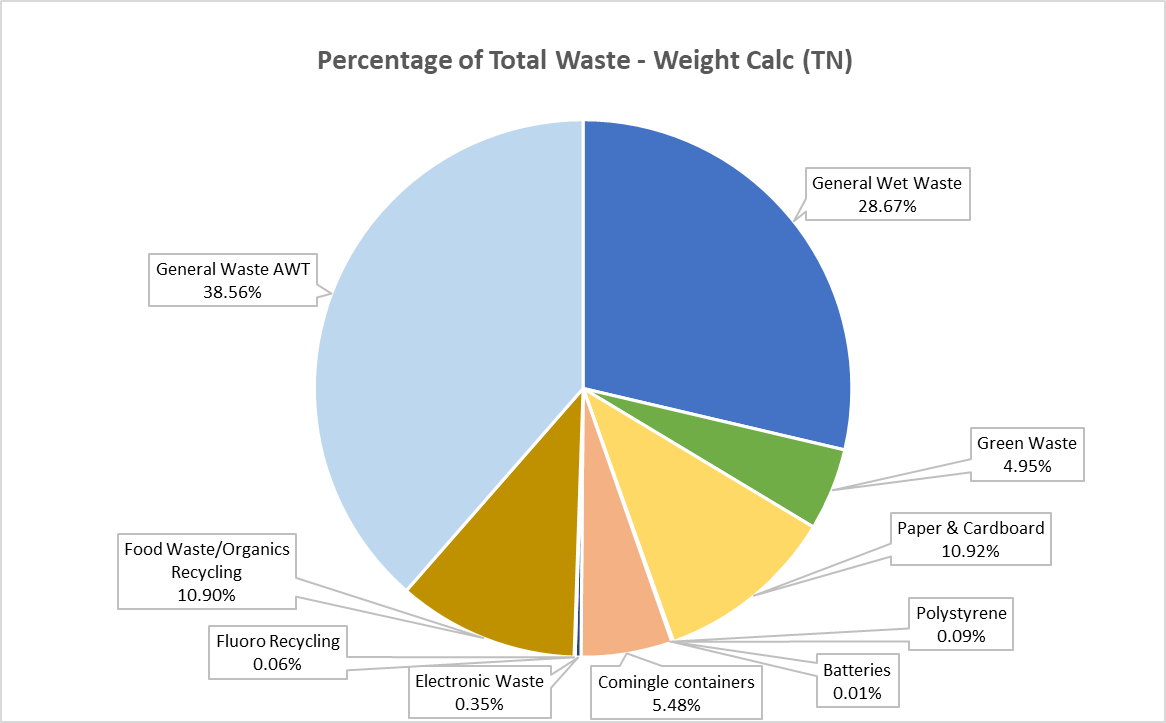Waste is categorised into three broad streams:
Solid waste
Solid waste (large hopper bins) is removed by a specialist waste removal contractor under UniSA’s cleaning contract arrangements.
Liquid waste
There is an annual contract with a specialist contractor to pump liquid wastes that are not able to be removed by the sewer system. This includes grease pits and trade-waste sumps associated with UniSA’s food and beverage outlets.
Other
This category includes the disposal of chemical, biological and radioactive waste, all of which is managed at a local level by the various Academic Units according to strict protocols.
The largest component of UniSA’s waste is solid waste. Over the past 12 months UniSA has produced 952 tonnes of solid waste, 71.3% of which has been diverted away from landfill. The relative percentages of UniSA’s solid waste (by weight) are shown below.

AWT = Alternative Waste Treatment which does not go to landfill.
Over the period 2010-2012, UniSA introduced three stream recycling across all campuses, the three streams being:
This strategy significantly reduced UniSA’s waste to landfill, but as with similar programs, there was a degree of cross contamination across waste streams. In 2019, UniSA changed waste contractor, with the new contractor removing and sorting all waste, irrespective of which bin it has been placed. This strategy has seen a significant improvement in waste diversion with a 58% reduction in waste to landfill from 2018 to 2019.
In 2018 UniSA also enforced that all food and beverage retailers on campus shall use compostable packaging for their takeaway food containers. Coffee cups are also compostable.
UniSA benchmarks exceptionally well regarding its waste management practices, and the recent change in waste management providers has seen a significant reduction in waste to landfill.

*Source: Tertiary Education Facilities Management Association Benchmarking Data